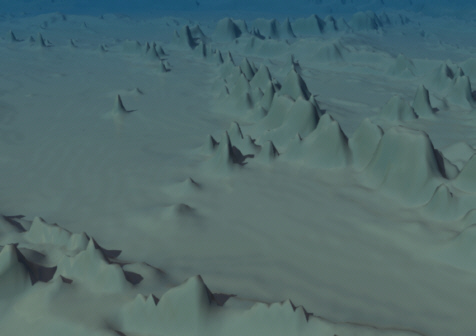| Seamounts |
| A seamount is a submarine mountain formed
by volcanic activity, rising at least 1000 metres (2730 feet) from the
surrounding sea floor. Smaller underwater hills are called sea-knolls,
while flat topped seamounts are known as guyots. Seamounts are completely
submerged structures: if they are built up by ongoing volcanism to protrude
above the surface they become islands.
Though particularly common in the Pacific they are very widespread. Ocean sounding surveys have revealed thousands of seamounts. It is thought worldwide that there could be as many as 20,000 of them.
Seamounts can occur in isolation or in clusters, but it is quite common to find them in chains. The most notable seamount chains are found in the Pacific. These have a northwesterly trend and are typically associated with fractures which crosscut the ocean floor. Among the longest seamount chains are those on the Hawaiian Ridge and the Emperor Seamount chain which runs northward from the western extremity of the Hawaiian ridge. Rocks retrieved from seamounts are said to be 'microcrystalline' or glassy. They comprise a type of basaltic rock produced at mid-ocean ridges. Over time a thin layer of marine sediments accumulates, blanketing the volcanic materials. Seamounts are not of purely geological interest. They attract the attention of biologists for the wide variety of marine life which thrive on or around submarine mountains. |
| Links | ||
|
